Everything’s bigger in Texas, right? Unsurprisingly, this applies to Largemouth Bass as well.
Texas is known for having some of the best Bass fishing in the nation, and that reputation entices anglers like you to search out hotspots in the state that can keep you busy no matter the conditions. One destination you should not overlook when planning your next fishing trip is Lake Travis, situated in Austin.

This flood control reservoir is a multi-use waterway created in 1942 with the construction of the Mansfield Dam. What that means for anglers is a clear water column compared to some of the other Texas lakes, and a water level that fluctuates between 10–20 feet on average, depending on the rain in the region. It covers 18,622 acres, offering various fishing opportunities along the fingers of its vast shorelines.
What fish can you catch in Lake Travis?
The lake has several species of fish that attract all types of anglers, but Bass dominates the interest of most who come here. Largemouth Bass is in abundant supply, enough so that Lake Travis hosted Bass Pro Tour’s Berkley Stage Two in 2021. Formed along the Colorado River, this reservoir is also home to a healthy population of Guadalupe Bass, the Texas state fish. Striped and White Bass populations are smaller, but both subspecies are catchable at Lake Travis.

The nice thing about this body of water is that you don’t have to be a pro to land a lunker. Fifteen-year-old Trace Jansen reeled in the lake record 15.32 lb Largemouth in 2021, using a whacky rig to entice the 28′ Bass.
Catfish are another draw to the waters here, and you can find sizable chuckleheads making local records. Like other Texas waterways, you can find Blues, Channels, and Flatheads here.
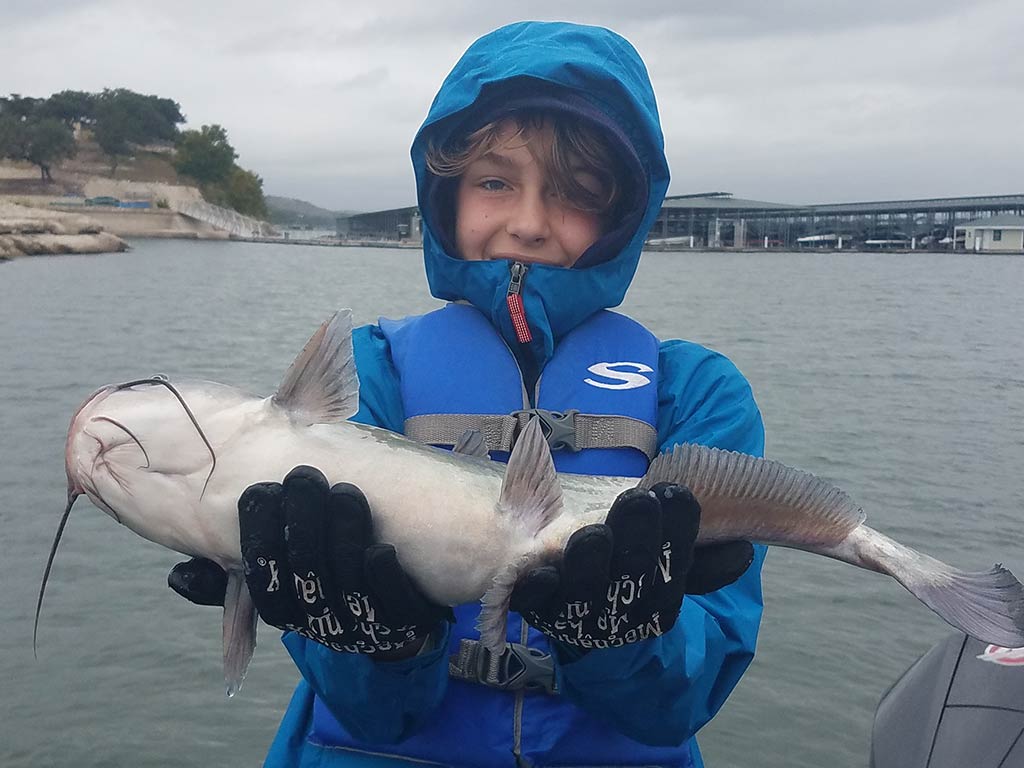
Those looking to stay busy with Sunfish will appreciate Lake Travis as well. You’ll find populations of Redbreast and Redear Sunfish accessible in several locations on the reservoir. Black and White Crappie inhabit these waters, but anglers consider fishing for these species to be poor here.
Some other species caught in Lake Travis over the years that might interest you include Smallmouth Bass, Carp, Rainbow Trout, and Hybrid or Longnose Gar.
How to Fish for Bass in Lake Travis
So we’ve said that Bass fishing is most popular, but before planning your Bass fishing trip on Lake Travis, you need to know which lures will yield success – and how to use them effectively. Let’s dive into these topics in order to ensure you’re prepared with the fundamentals.
Common Techniques Start with Understanding Underwater Structure
You’ll find lots of rocky banks and cliffs in the underwater environment at Lake Travis. Add a clear water column, and you’ll find yourself in deeper waters if you want to stay busy. Subtle changes in substrate and quick drop-offs should be your prime targets.
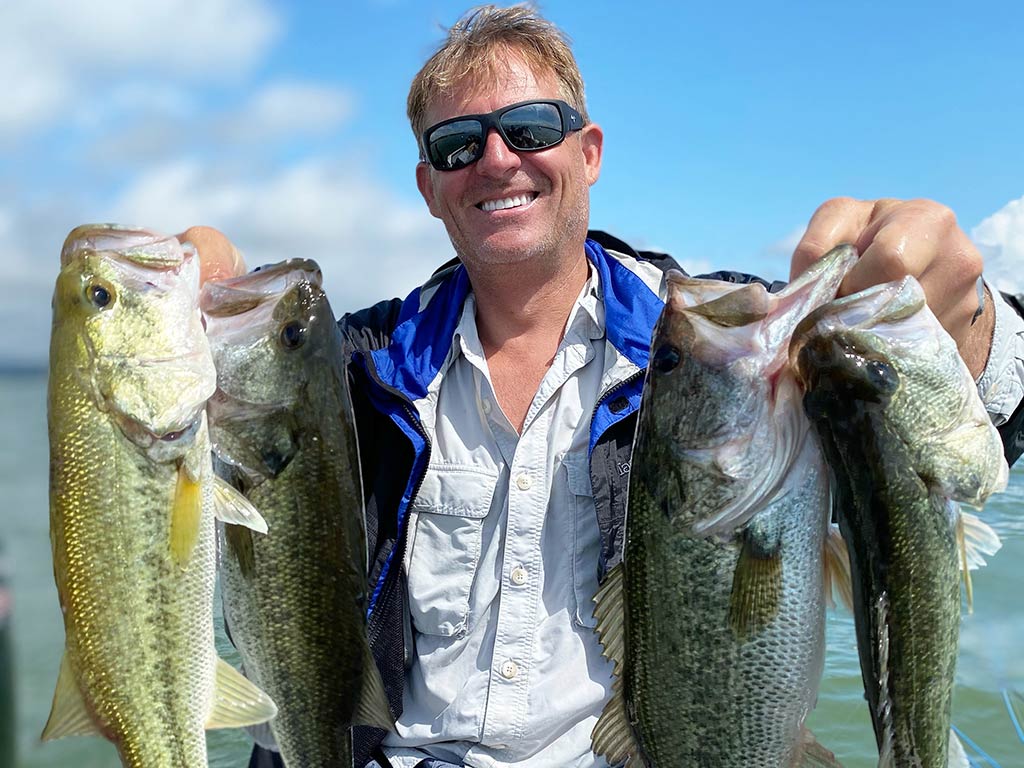
While fish in these areas are used to less cover, they’ll likely spook more readily. Casting at a distance is good here, as fishing directly above or trolling past a target point might cause the startled Bass to move. It’s also crucial to determine where these predators are in the water column – are they hugging the substrate or suspending over a sudden depth change?
Another stand-out feature on Lake Travis, especially on the upper end of the reservoir, is flooded vegetation. The water is not as clear at this end of the waterway, which can help with a closer approach for casting lighter tackle.
It’s necessary to look for things that clue you to where bait fish might be gathering. Find where the shorebirds are feeding – the Bass will often be in ambush points nearby. Look for feeder creeks along the shore as they provide current that opportunistic Bass will use for easy meals.
Best Lures to Use
Fishing on the top of the water column can yield some of the best results on Lake Travis due to its rocky bottom and clear water. You can pull fish off the bottom to make them move up from their suspension points with attractive presentations.
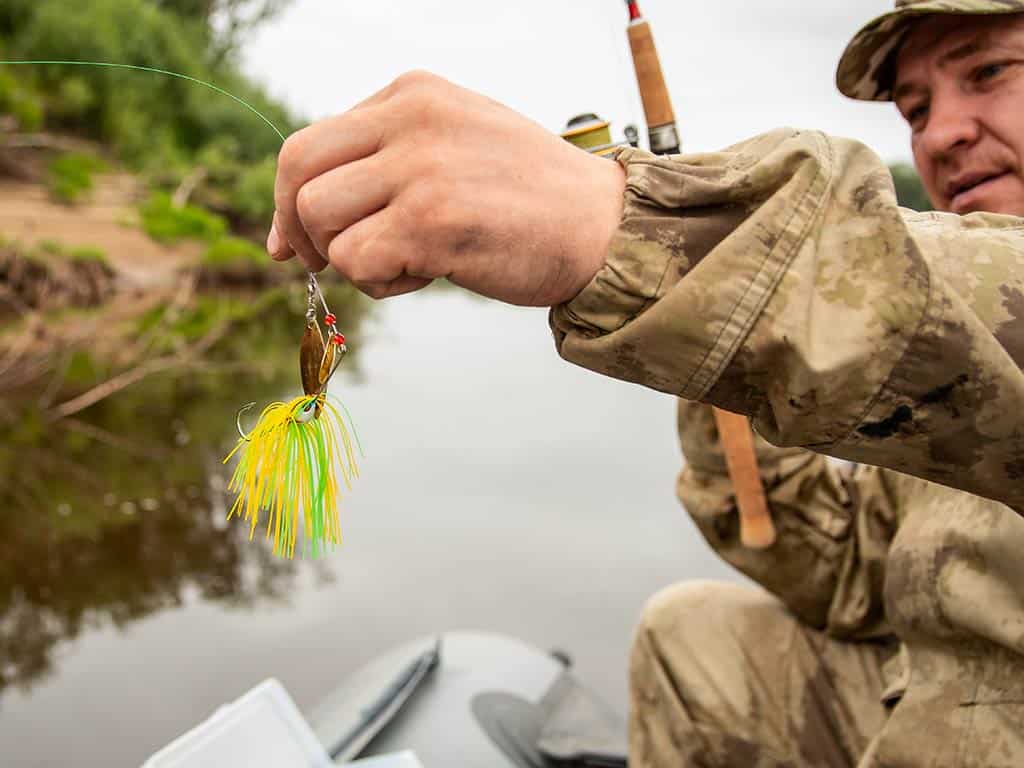
Popping and walking the dog with baits like jumping minnows, rebel pop-rs, and zara spooks provide lots of water agitation that Bass find stimulating. You can use spinnerbaits near the surface of suspension points with decent success.
When the fish move to spawn areas in spring, many anglers will work various tackle along the shoreline. You can drop a jig down rocks in these areas or use a soft plastic that mimics crawfish, worms, or other bait fish. Berkley’s powerbait “The General” was popular with some pros during Stage Two in 2021.
If you fish from shore, avoid casting a shadow and try throwing at angles that let you drag a double willow-leaf spinnerbait along the shoreline. When you hit the flooded vegetation on Lake Travis, stick with presentations that won’t snag, including plastics and hollow-body lures.
Top Lake Travis Fishing Spots
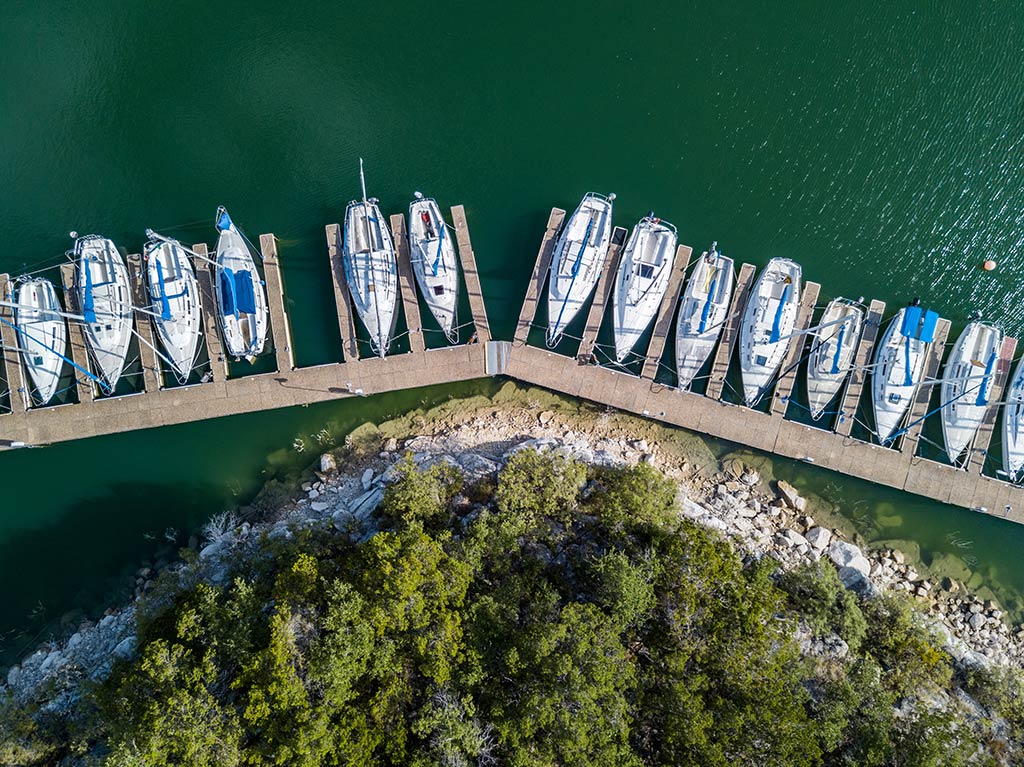
Mansfield Dam Park is a great place to start if you’re fishing from the shore. You get plenty of shoreline access, and a long point extends from the parking area into deeper water on this end of the reservoir.
That depth creates sharp drop-offs on the sides of this point, and you can find schools of Bass in the area. The cove at the park is blocked off from boat traffic and doesn’t get as much fishing pressure. That makes it another point of interest you can try.
From a boat, locations like Windy Point Park stand-out for offering large rocks and other structures. There are also several coves nearby that you can explore by targeting points sticking out from them.
Bass will use the large rocks as ambush points, allowing you to target them with jigs and similar tackle that can drop from above. You can launch a boat from here, and it also provides other amenities like grills, picnic tables, and free Wi-Fi.
Places to Fish from a Bank
When the water levels are high at Lake Travis, places like Cypress Creek Park favor bank fishing because there’s a lot of brush underwater. Bass will use flooded areas like this to ambush bait fish and find other things to eat.
During times of the year when Bass are deeper (think summer), finding shoreline access to deeper water requires steep banks. Pace Bend Park‘s west side has rocky bluffs that Largemouth Bass will cling to, looking for food to fall.
Bass will hang near subtle changes in their environment. Look for these, and you’ll find fish. For example, Wharf Cove Road ends in the water near Volente Beach Waterpark. The public road has drop-offs on its sides you can cast into, and a fence runs along the road into the water. Dragging these structures or fishing along the surface can pull Bass from their hiding spots.
Where to Fish from a Boat
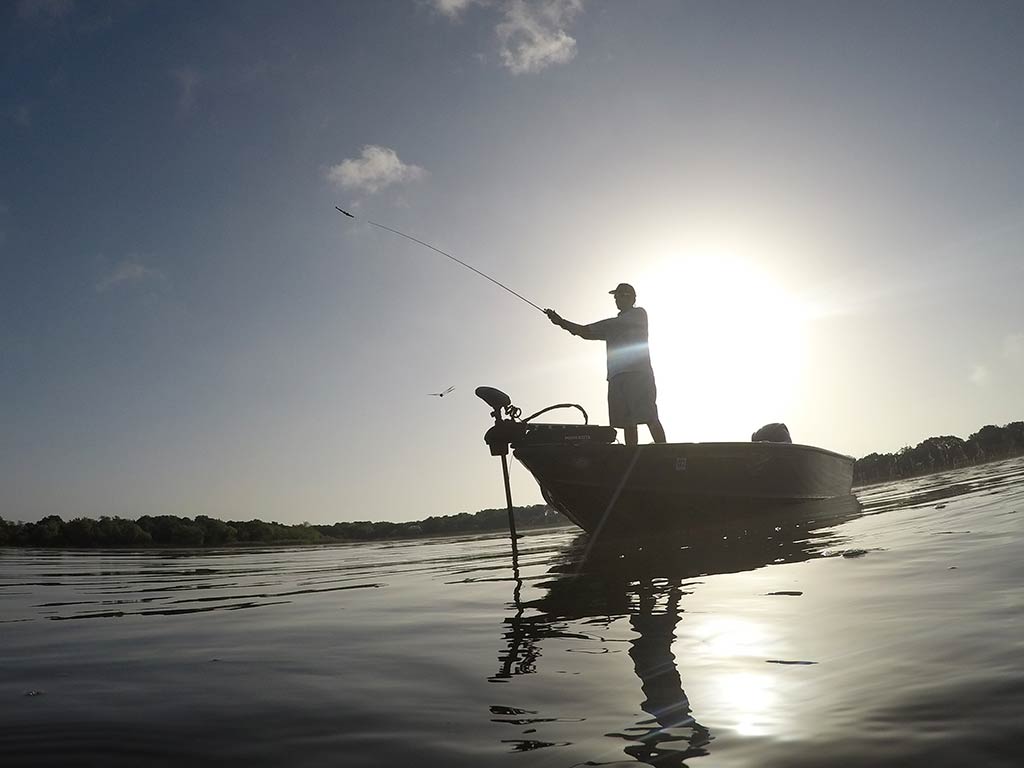
With a body of water as big as Lake Travis, you must tap into local resources like shops, forums, and the Texas’s Parks & Wildlife own reports to learn the depths and locations to fish if you’re on a boat.
The reservoir is well over 60 miles long and has approximately 270 miles of shoreline. It can reach 190 feet in depth, and the water levels can swing several feet in either direction within hours. Planning will help you avoid wasting time better spent landing that next wall hanger into your boat.
You want to find areas to fish that are near boat ramps. Locations like Arkansas Bend have boat ramps close to several points and other underwater structures you can attack.
Fishing spots with deep water access are necessary on this reservoir. Locations like the waters around the Austin Yacht Club allow you to reach Bass suspended near deep water drop-offs. You can also fish along submerged points and channels that act as food highways.
Best Times to Fish Lake Travis
Spring and fall are typically the best times of year to catch Bass across the country, including Lake Travis. Spring is the spawning season when Bass will move from deeper waters into shallow waters with warmer temperatures. Fall is the other time of year for good Bass fishing because the temperatures will start to drop – but it’s before the hawgs head deep for winter.
Bass fishing between June and August can be challenging as the fish head deeper for oxygen-rich waters. They’ll go deeper in winter and become pickier about what they’ll chase as they’re in energy conservation mode.
Lake Travis Fishing Regulations
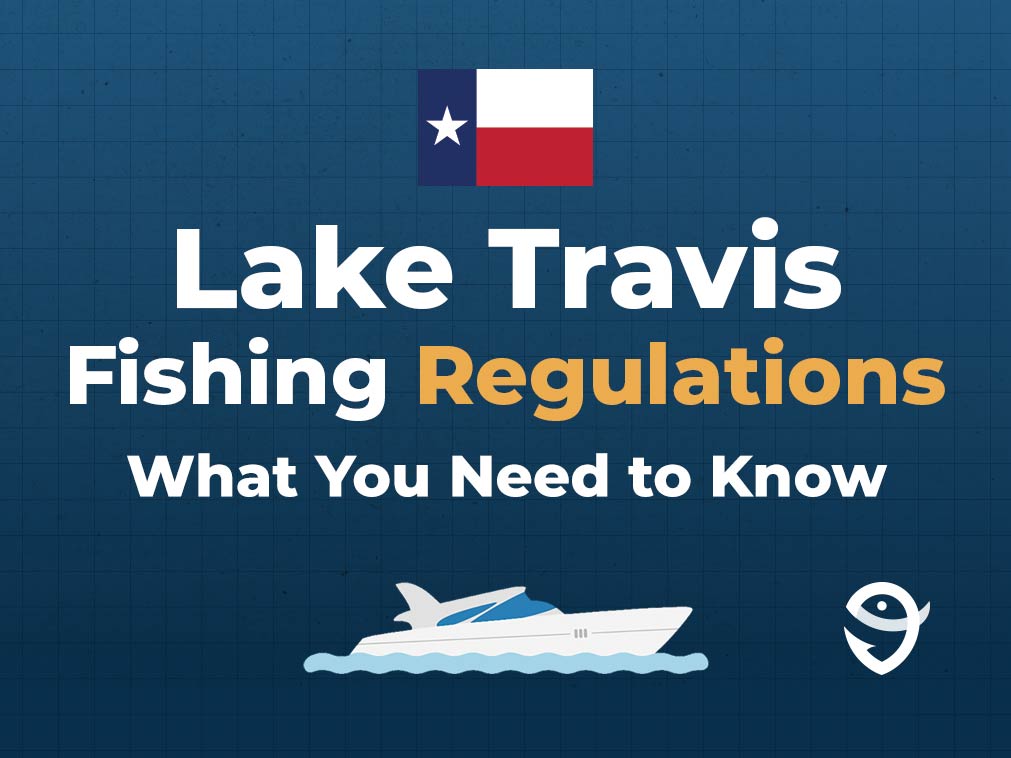
Before heading out to swing that next wall-hanger into your boat, you’ll need to check that everything is in order. Residents and non-residents over the age of 17 must be licensed to fish all Texas rivers, lakes, ocean ways, and waterways. There are some exceptions, however, which you can check out in this handy guide to Texas fishing licenses. You can get a license online from the Texas PWD.
Fishing on Lake Travis will also require a Freshwater Fishing Endorsement. Eligible Texas residents can also purchase a lifetime license instead of a yearly one.
Some locations along Lake Travis’s shoreline are free to access, while developed facilities like Mansfield Dam Park charge a day-use fee.
Lake Travis Fishing FAQs
Lake Travis Fishing: A Bass Hotspot – and More!
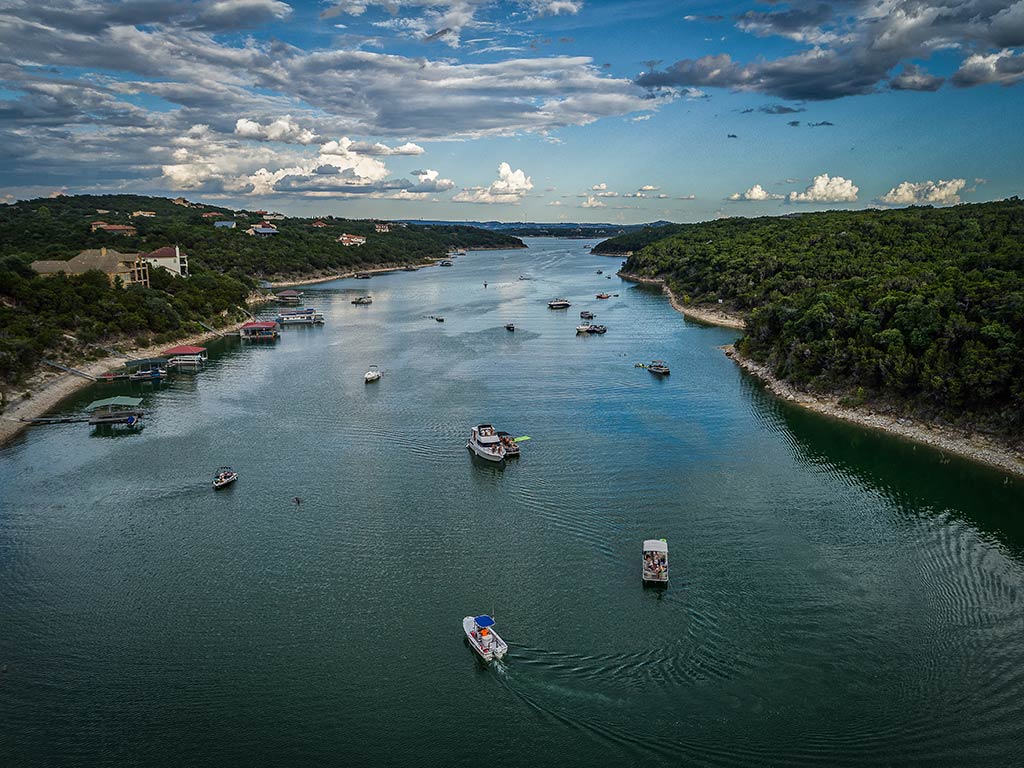
As you can see, Lake Travis is a large body of water with plenty to offer anglers like yourself, especially at some of the locations discussed above. The lake is known to offer some of the best fishing for Largemouth Bass in Texas. Its vast size means you must adapt your presentation and lure selection to match conditions at your current location. Sorry, there’s no one-size-fits-all approach on a body of water over 63 miles long and 4.5 miles at its widest!
As expected, spring and fall are some of the best times to visit, especially for those prized Largemouths. Identify the fish you want to catch and check you have all your paperwork in order… See you on the water!
Have you ever been fishing in Lake Travis? How was your experience? We’d love to hear from you in the comments below!
The post Lake Travis Fishing: An Angler’s Guide appeared first on FishingBooker Blog.
https://ift.tt/0IXoi8Y
0 Comments
Enregistrer un commentaire